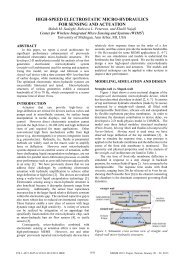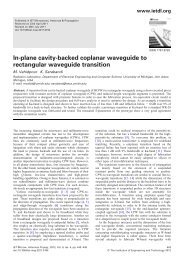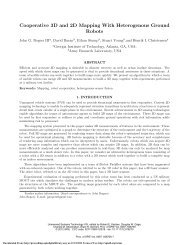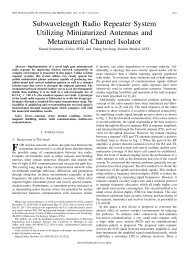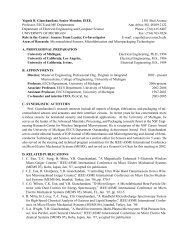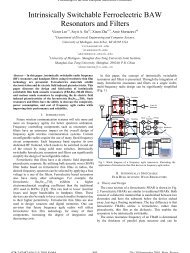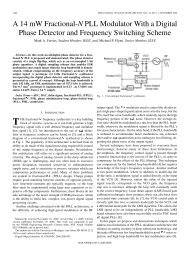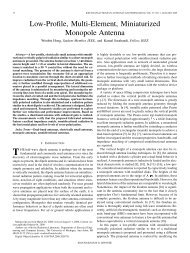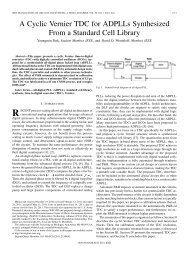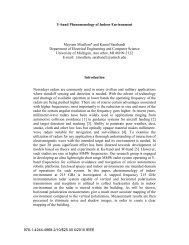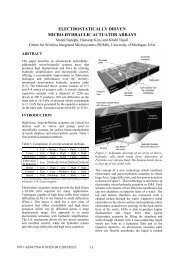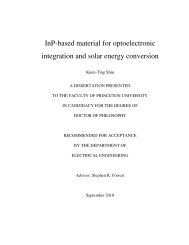[Sample B: Approval/Signature Sheet]
[Sample B: Approval/Signature Sheet]
[Sample B: Approval/Signature Sheet]
You also want an ePaper? Increase the reach of your titles
YUMPU automatically turns print PDFs into web optimized ePapers that Google loves.
ABSTRACT<br />
Squaraine Donor Based Organic Solar Cells<br />
By Guodan Wei<br />
Chair: Stephen R. Forrest<br />
There are three main ongoing avenues to improve the power conversion efficiency of<br />
organic photovoltaics (OPV): the development of new organic materials, improved<br />
process control and novel device architecture design. In this thesis, through molecular<br />
design with chemical modification of functional organic molecules, a family of new<br />
highly absorptive solution processable squaraine (SQ) materials have been systematically<br />
synthesized and explored to improve the sunlight harvesting and charge transport. The<br />
spin-cast SQ donors are then coated with fullerene acceptors to form a unique<br />
nanocrystalline heterojunction (NcHJ) OPV device. This combination of a novel and<br />
efficient family of SQ donors, a unique NcHJ device architecture and optimized<br />
fabrication processes leads to high efficiency solar cells. For example, solar cells with<br />
efficiencies of ~5.7 % and a fill factor ~0.74 are achieved.<br />
We find a correlation between solar cell fill factor with the SQ thin film density,<br />
providing support for the molecular design concept that planar end groups result in close<br />
intermolecular stacking, and hence improved charge transport and exciton diffusion.<br />
Finally, thermal annealing of the films results in the formation of nanocrystalline<br />
morphologies that lead to further improvements in device performance. The microcrystal<br />
growth of SQ donors have been characterized by XRD, AFM and TEM.<br />
xix


![[Sample B: Approval/Signature Sheet]](https://img.yumpu.com/34084789/20/500x640/sample-b-approval-signature-sheet.jpg)
